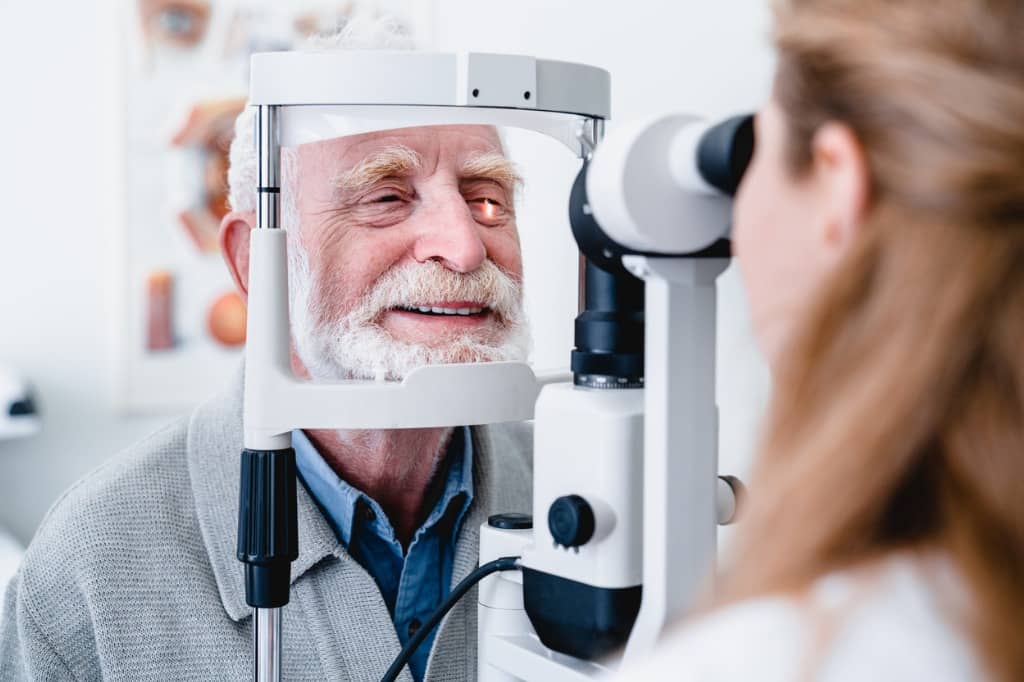Compassionate Eye Doctor: Professional Care for Riverside Residents
Compassionate Eye Doctor: Professional Care for Riverside Residents
Blog Article
The Comprehensive Eye Exam: What to Anticipate During Your Visit to the Eye Doctor
A browse through to the eye doctor for a detailed eye exam is greater than a routine check-up; it is a vital action in safeguarding your visual health. From the initial discussion of your case history to the precision of the visual skill examination, each component of the exam serves a specific objective. What specifically occurs during the eye health assessment, and just how does it affect the prescription process? Comprehending these aspects is vital for those who wish to maintain optimum vision. As we check out each component, the value of follow-up referrals will certainly likewise become clear.
Initial Assessment
The initial examination during an eye test functions as an essential structure for comprehending a person's visual wellness requirements. This phase sets the tone for the whole exam procedure, allowing the optometrist to collect vital info about the person's case history, way of living, and certain vision problems. By thoroughly assessing any kind of pre-existing conditions, medications, or previous surgeries, the eye care expert can customize the assessment to attend to private demands successfully.

Additionally, the preliminary assessment is a chance for clients to articulate any type of concerns or worries, promoting a collective connection with their doctor. This interaction not only makes certain that the person feels informed and comfy yet likewise empowers them to get involved proactively in their eye wellness administration. Collectively, these discussions enable the optometrist to design an individualized evaluation plan, guaranteeing optimum treatment and specific diagnosis.
Aesthetic Acuity Test
Beginning the core elements of an eye evaluation, the aesthetic skill examination is designed to examine the sharpness and quality of an individual's vision. This vital examination aids establish how well a person can determine letters or signs at a standardized distance, generally utilizing a Snellen chart (Eye Doctor). The graph comprises rows of letters that lower in dimension from top to base, with the individual placed at a normal range of 20 feet
Throughout the test, the individual is asked to cover one eye and review aloud the smallest line of letters they can see clearly. This process is duplicated for the other eye. The outcomes are recorded as a portion, with 20/20 vision indicating regular aesthetic skill-- where the client can see at 20 feet what an individual with typical vision can see at that distance.
The visual skill test also determines potential refractive errors such as hyperopia, nearsightedness, or astigmatism, which could necessitate rehabilitative lenses. By developing a standard of aesthetic efficiency, the test is a vital analysis tool that helps the eye care expert in creating a proper therapy plan tailored to the individual's unique visual needs.
Eye Wellness Analysis
Following the aesthetic acuity examination, a detailed eye health analysis is carried out to ensure the overall well-being of the eyes. This critical section of the eye test includes a comprehensive evaluation of both the outside and internal structures of the eye.
Following, attention changes to the internal structures. Via making use of ophthalmoscopy or fundus digital photography, the retina, optic nerve, and blood vessels are diligently assessed. This action is crucial for identifying problems such as retinal detachment, glaucoma, Check Out Your URL or diabetic retinopathy. Oftentimes, pupil expansion is performed to improve presence of the internal eye structures, although this might cause temporary light level of sensitivity for the person.
Furthermore, intraocular pressure is determined to evaluate for glaucoma threat. This is generally done utilizing tonometry, which can find raised stress degrees that might suggest potential damage to the optic nerve. Collectively, these evaluations create a comprehensive analysis to maintain ocular health and wellness.
Refraction and Prescription
Refraction is an innovative treatment carried out by eye care specialists to figure out the exact additional hints lens power needed to deal with refractive mistakes such as nearsightedness, presbyopia, astigmatism, and hyperopia. The goal of this treatment is to assess just how light bends as it passes with the eye, allowing the expert to figure out whether restorative lenses are necessary for enhanced visual skill.
During the refraction procedure, the patient is asked to check out a phoropter, a gadget which contains different lenses. The practitioner will systematically alter these lenses and ask the patient to contrast quality between alternatives up until the most effective possible vision is attained. This treatment is important in crafting an accurate prescription that defines the appropriate lens power for glasses or call lenses.
The prescription stemmed from this treatment not just enhances vision however also serves as a structure for picking suitable restorative glasses. It is vital to make certain that prescriptions are on a regular basis updated, as changes in vision can take place over time, highlighting the relevance of routine eye evaluations. This thorough attention to detail assists preserve clear, comfy vision in life.
Follow-Up Recommendations

During a follow-up browse through, the eye medical professional will conduct a series of examinations to review aesthetic skill and look for any changes in vision that may demand an upgrade to the prescription. Furthermore, the follow-up provides an opportunity to review any type of pain or issues experienced with present eyewear. Changes can be made to make certain convenience and efficacy, whether with lens alteration or framework changes.
For patients with ongoing problems such as glaucoma, diabetes-related eye problems, or macular degeneration, even more constant follow-ups may be necessary. These appointments are important for handling and potentially slowing the progression of eye condition. Complying with these recommendations can considerably add to preserving aesthetic health and protecting against long-lasting issues.
Verdict
The detailed eye examination is a necessary process for preserving aesthetic health, incorporating a thorough evaluation of medical background and vision worries. Trick elements consist of the aesthetic skill test, which evaluates eyesight quality, and the eye health and wellness evaluation, which checks out the general problem of the eyes. Refraction tests aid establish the specific lens prescription essential for optimal vision adjustment. Follow-up suggestions give guidance for continuous eye care, ensuring that any possible issues are resolved immediately and successfully.
A browse through to the eye doctor for a comprehensive eye test is more than a routine check-up; it is a crucial step in guarding your aesthetic health.Kicking off the core elements of an eye evaluation, the visual skill examination is designed to assess the sharpness and clarity of a patient's vision.Complying with the visual acuity examination, a comprehensive eye health and wellness analysis is conducted to make sure the overall wellness of the eyes. These sees enable the eye treatment specialist to monitor modifications in vision, update prescriptions, and analyze the total health of the eyes. Key parts include the aesthetic acuity examination, which evaluates sight clarity, and the eye health evaluation, which checks out the general problem of the eyes.
Report this page